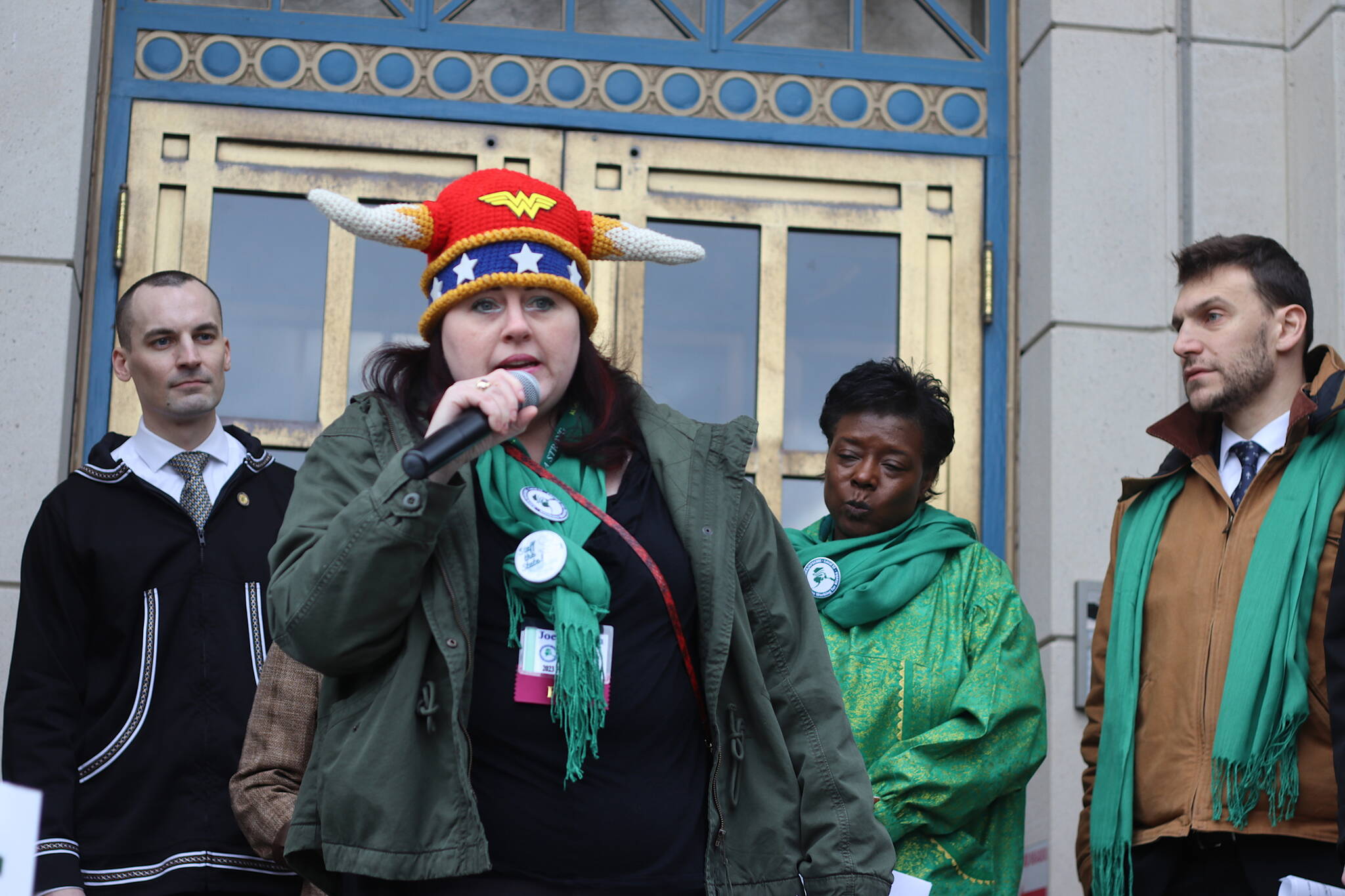Joey Tillson was wearing her warrior hat to show she’s among fighters, but it’s the combativeness of clients needing help from her colleagues at the beleaguered state Division of Public Assistance that prompted the call to action Friday.
Tillson, an employee at the division’s Ketchikan office, was among about 50 people participating in a rally in front of the Alaska State Capitol protesting the ongoing staff shortages affecting many state agencies, along with alleged causes such as poor wages and a lack of respect from the public and policymakers.
Many participants are also spending part of the week roaming the Capitol halls to visit legislators and, while most or all the 60 elected members are plenty familiar with the issues raised by state employees, Tillson said the division’s recent crisis may finally convince some skeptical lawmakers to take action.
“Now people are starving,” she said. “They haven’t had food since August.”
Thousands of households have gone months without food stamps, officially known as Supplemental Nutrition Assistance Program benefits. Top officials at the state Department of Health are blaming a worker shortage and obsolete technology for the backlog, which is also affecting other public assistance programs such as Medicaid.
Tillson, who said she raised concerns to department leaders and legislators a year ago because the public assistance division was “in crisis” and losing a few employees every week, said the situation is so serious now there are numerous incidents where employees are facing threats, sometimes involving weapons, including a recent one in Ketchikan.
“We had an employee that was threatened on a city bus because they were recognized by a client,” she said.
About a half-dozen union leaders and state lawmakers addressed the crowd during the 30-minute rally, and all ended their remarks by leading various chants such as “work shouldn’t hurt” and “staff our state.”
The state legislators addressing the crowd noted there are crises occurring in a multitude of state entities ranging from schools to street maintenance. But state Rep. Genevieve Mina, D-Anchorage, said the public assistance division problems are among the most immediately pressing.
“We’re providing for our most vulnerable — we’re feeding people who are hungry, we are making sure that people who are sick are getting the care and help they need to become successful in our society,” she said.
The issue has already been the subject of legislative hearings at the Capitol. Heidi Hedberg, recently appointed as the commissioner-designee of the Department of Health, told the Senate Health & Social Services Committee during a meeting in late January some of the backlog is due to problems such as a computer using 1959 technology that holds essential data. She said hiring security officers to deal with the threats and temporary private contract workers to perform some of the most-urgent technology-related duties are among the measures currently underway to relieve the backlog.
The food stamps crisis involves people applying to renew benefits — about 8,000 of the 80,000 total in the program since September — and as of the committee hearing the public assistance division was still trying to catch up on October’s backlog.
Among the union leaders to address the crowd was Heidi Drygas, who this week became executive director of the 8,000-member Alaska State Employees Association,the state’s largest public employees union. She said while the issue of public employees wanting better pay and working conditions are hardly new, she believes the situation is different enough now because of the number of people affected to make rallies like the one Friday matter.
“Unfortunately, I think it took a crisis with the attrition and the incredible amount of vacancies to make Alaskans pay attention,” she said.
• Contact reporter Mark Sabbatini at mark.sabbatini@juneauempire.com

